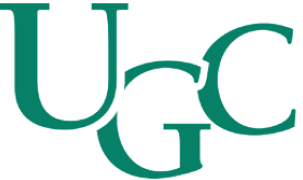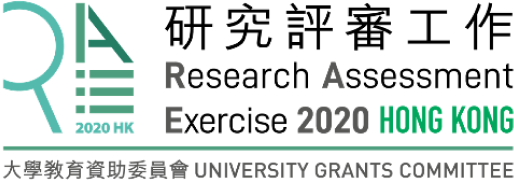Research categories:
?Engineering
Engineering, Electrical & Electronic (1)
Materials Science
Materials Science, Ceramics (1)
Materials Science, Multidisciplinary (1)
Materials Science, Coatings & Films (1)
Case Study
Creating innovative textiles, business growth and environmental savings through pioneering technology
1. Summary of the impact
Research at PolyU by Professor Kinor Jiang has created innovative, sustainable and mass producible metal-coated textiles with unique visual effects. Opening up new markets and enabling new opportunities for high couture fashion, these textiles have already created commercial, environmental and design benefits earning [-redacted-] of investment, creating two new companies [-redacted-] since 2017. At the same time, [-redacted-] water have been saved and zero harmful emissions or pollutants created. Over 20 fashion designers [-redacted-] have used the textiles in their work. The textiles are also improving wellbeing in a pilot project utilizing their anti-bacterial, UV and heat-shielding qualities in an elderly residential home.
2. Underpinning research
The textile dyeing industry creates water and chemical pollution on a huge scale. Tightening anti-pollution legislation and growing public environmental concern mean both industry and fashion designers are seeking sustainable eye-catching alternatives.
Prof Kinor Jiang and his team at the High Performance Film for Textile and Fashion laboratory have been exploring magnetron sputtering coating technology. Using this to place very thin, nano-scale, metal films onto textiles they have created lustrous coatings without affecting the fabric’s natural feel. The technique involves placing solid metals into a vacuum, applying power to disperse the metals into nano-droplets, and collecting these onto the fabric. Jiang’s team were the first to explore this possibility in relation to mass textiles. Jiang’s research (PolyU 2006-present) developed the technology’s aesthetic and design possibilities, tested and proved the functionality of the fabric produced and established the process to refine and standardize the technology for mass production.
Jiang’s initial research established that this technology could create textiles with varied appearance. He established 3 main ways to control the appearance: through the fabric used (depending on fibre, colour, structure, pre-treatment), the metals applied (whether single metals, alloys mixed in advance or created through layering, or oxides) and the coating thickness (via modifying application speed or the power applied to the metal) [1, 2].
Publishing more than 35 papers involving sputter coating technology in SCI journals, Jiang has 5 China patents and filed a further 6 patents. Research funded by the HK government (HK$ 6M) and 4 companies (HK$ 2M), including long-term collaborators Royal Success, focusing on 3 commonly used fabrics (silk, cotton and polyester) and two metals (silver and titanium) moved this novel technique towards commercialization. Its performance was evaluated against international textile specification requirements, easily meeting or exceeding these [3].
Jiang also patented a concept in 2014 to create continuous patterns by using the sputtering technology together with a stenciling technique on a roll-to-roll system [4], later developing that system for mass production. The research also established the parameters and operating processes required for reliable, uniform production of fabrics. Machine production tests followed [5] and a further research project created silver and titanium coated polyester curtains to provide UV protection, heat shielding, water repellence and anti-bacterial properties [6].
3. References to the research
[1] Jiang, S.X., Qin, W.F., Guo, R.H., Zhang, L. (2010). Surface functionalization of nanostructured silver-coated polyester fabric by magnetron sputtering. Surface & Coatings Technology. 204(21-22). 3662-3667. DOI: 10.1016/j.surfcoat.2010.04.042 [Scopus citations 72 as at Nov 2019]
[2] Jiang, S.X., Sputtering Coating System for Sustainable Textiles and Fashion, 2013-2019. Body of work submitted as non-traditional output to RAE 2020 http://ira.lib.polyu.edu.hk/handle/10397/81406
[3] Jiang, S.X., Miao, D.G., Yang, G.M., Chen, Z.M., Li, A.S., Shang, S.M. (2015). Fabrication of Ag thin film on polyester fabric by roll to roll magnetron sputtering system. Journal of Materials Science: Materials in Electronics. 26(5). 3364-3369. DOI: 10.1007/s10854-015-2841-6 [Funded by ITF: ITP/012/11TP, HK$3,914,854, 2011 – 2014]
[4] Patent: Jiang, S.X., Miao, D.G., Jiang, H., Guo, R.H., Roll to Roll Magnetron Sputtering Device for Textile Pattern Generation, PRC: 201420582217.3 [Funded by ITF: ITP/012/11TP, HK$3,914,854, 2011 – 2014]
[5] Jiang, S.X., Xu, J.T., Miao, D.G., Peng, L.H., Shang, S.M., Zhu, P. (2017). Water-repellency, ultraviolet protection and infrared emissivity properties of AZO film on polyester fabric. Ceramics International, 43(2), 2424-2430. DOI: 10.1016/j.ceramint.2016.11.032 [Funded by ITF: ITP/046/13TI, HK$ 2,825,258, 2014-2016]
[6] Patent: Jiang, S.X. Functional curtain fabric with anhydrous coating and its preparation method, PRC, No: 2017101662046
We believe that the citations and peer-reviewed funding received are indicators of the quality of the underpinning research.
4. Details of the impact
The designer Rui Xu describes Jiang’s methods as “creating an iridescent visual effect of a burning flame” [A]. However, Jiang’s research has not only created novel textiles with unique appearance but also a clean alternative for the traditionally heavily polluting dyeing industry, and materials with functional applications. The unique properties of the textiles and manufacturing process have led to economic and environmental impacts through commercialization, cultural impacts through inspiring fashion designers, and wellbeing impacts through a pilot healthcare project.
Stimulating Business - Following a long-term partnership with Jiang (including sponsorship of several research projects) that continues to the present day, Royal Success, a mainland Chinese textile company, commercialized the technology. This partnership has revolutionized this company, transforming their business model from traditional (low-innovation) textile manufacturing into a high-technology, innovation-driven company. Mr Yu (General Manager and owner, Royal Success) states “This technology is of enormous value to us. The traditional and out-dated printing and dyeing industry causes serious pollution, and this technology has inspired us to transform ourselves into a high-tech, intelligent, green and environmental-friendly modern enterprise” [B].
Royal Success have created 2 new companies based on this technology: one to manufacture and the other to use R&D to develop new products and markets. [-redacted-] The manufacturing company - Guangdong Rising Well Science & Technology - established in 2016 [-redacted-] is building a full demonstration factory which “is completely transforming this traditional industrial district …The landscape of the printing and dyeing industry is being reshaped” [B]. The factory features a large production machine following Jiang’s lab-scale RtR system. This large sputtering system machine can produce about 10,000 m2 of coated cotton, silk, nylon or polyester textiles per day. Since its 2017 launch, [-redacted-] mostly silver-coated textiles have been marketed, [-redacted-] [B].
Guangdong Rising Well greatly benefits from this technology's low-cost: "compared with traditional dyeing and finishing techniques, the total cost of this technology is reduced by 23.5%, and the gross profit margin increased 16.6%. The same production output can be achieved with a 70% reduction in manpower" [B].
Since 2017, the R&D company - Beijing Nano Co/oration Science and Technology [-redacted-] has been leveraging PolyU knowhow to explore new products, different colours and exploit the textile's prope1iies such as its antibacterial nature. Investing [-redacted-] to conduct further researc [-redacted-] based on their own research with some consultations with Jiang have been filed.
Benefiting Customers - Guangdong Rising Well customers enjoy a unique product, with previously unavailable aesthetic qualities. The major buyers include China's top silk manufacturing company Shenzhen Guangdong Gambiered Silk Company, Foshan Tiandihe Fashion Company, Sunfeng Textile and fashion designer Bailuyu. This technology's colour effect em iches the quality of Shenzhen Guangdong Gambiered Silk Company's high-class silk products, which will be used in the 2022 Hangzhou Asian Games. Luolai, Wansli and French fashion house Poiret have bought the textile to trial in their new products and designs.
Saving the environment and money - The traditional dyeing industry is extremely environmentally unfriendly and unsustainable. Water-intensive, dyeing creates harmful waste chemicals, air pollution and requires expensive treatinent technology to reduce chemical pollution. Jiang's textiles are revolutionaiy as the process applies dry coatings without any water or chemicals. Further environmental benefits include no sulfur dioxide, nitrogen oxides and dust emissions from coal combustion; no chemical odor (such as hydrogen sulfide) and no industrial waste (such as sludge) [B].
[-redacted-] [B].
This technology's environmental impact has been recognized by industry associations. After a 2016 Guangdong Rising Well site visit, Prof. Albert Fu, Executive Vice Chainnan of the China Textile Engineering Society remarked "The research makes an outstanding contribution to the sustainable development of the textile industry" [C].
Inspiring creative practitioners - the produced fabrics have grabbed attention across the fashion and design industry. Sputter-coated textiles have inspired designers, leading them to invest resources in order to add new dimensions to their global showcase collections.
More than 20 fashion designers have worked with Jiang to use the metallised textiles for their collections between 2013 and 2018, including Hometown of Gambiered Canton Gauze, Evening, and RUIXU. Wanning Yu, founder of Evening, states: "This collection was designed with a redefined concept of "Natural textiles" and continued the brand's contempora1y image ... the new fashion collection has received a waim response from media. It was so exciting to have the experience using these beautiful textiles for fashion designs" [D]. Rui Xu noted that three museums took pieces for their permanent collections, including the Victoria and Albert Museum, London and said that “the metallic works always attract people’s attention because of [their] amazing appearance and unique technology” [E]. Creating collections using these textiles represents a significant investment on the part of fashion designers, [-redacted-] [E].
Sputter-coated designs have been exhibited in 6 international fashion shows since 2013 including the Fashion Parade, Rebelles at the International Festival of Extraordinary Textiles in France in 2016 and China Fashion Week 2019SS. Metallised textile and fashion designs have also been shown in over 20 exhibitions globally, including From Xuan to Blindness at the Upper Gulbenkian Gallery at the Royal College of Art (London, 2015), Beauty on Fire - for Zaha at the Zaha Hadid Design Gallery (London, 2016), and Surface Design in Fashion -- Works by Kinor Jiang and Collaborators (II) at the Jill Stuart Gallery at Cornell University (New York, 2018).
The fabrics have won 7 prizes and awards for innovative design, including at the 2015 China International Fabrics Design, the 2016 spring/summer Fabrics China Appraisal Entry Enterprise, and the Advanced Future Technology Competition organized by Chinese Academic of Sciences in 2018 [F].
Boosting wellbeing - Sputter-coated textiles’ functional properties have been exploited in a pilot project creating antibacterial curtains for Helping Hand Elderly House, (a Hong Kong NGO). 62 sets of silver and titanium coated curtain panels were installed in an elderly residential house in 2016. These curtains i) help reduce bacterial infections from home textiles as they have an 61.76% inhibition rate for Escherichia Coli, and 100% for Staphylococcus Aureus, ii) weigh less than regular curtains as the film is very thin, lessening washing machine burden, iii) are water repellent which helps keep them clean, iv) reduce indoor temperatures compared to alternatives while still letting in light, saving electricity through reduced air-conditioning. Chan Fung Har, Administrator at Helping Hand confirms that the curtains reduced the temperature by around 2°C, providing a “warm and modern” as well as a “healthy and comfortable environment for the elderly” [G]. The full effects are being evaluated and Guangdong Rising Well are using these results to develop and market these products.
5. Sources to corroborate the impact
[A] Article on ‘Beauty on Fire – for Zaha’, June 2016 (archived April 2019) [-redacted-]
[-redacted-]
[-redacted-]
[-redacted-]
[-redacted-]
[F] China News Network article on Advanced Future Technology Competition, June 2018 (archived October 2019)
[G] Feedback from Chan Fung Har, Administrator of Helping Hand Elderly House, June 2018

